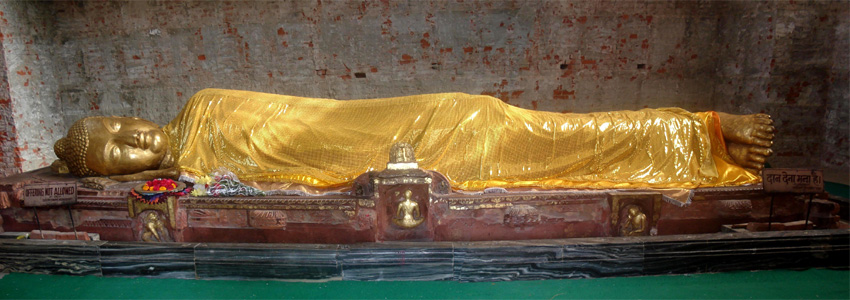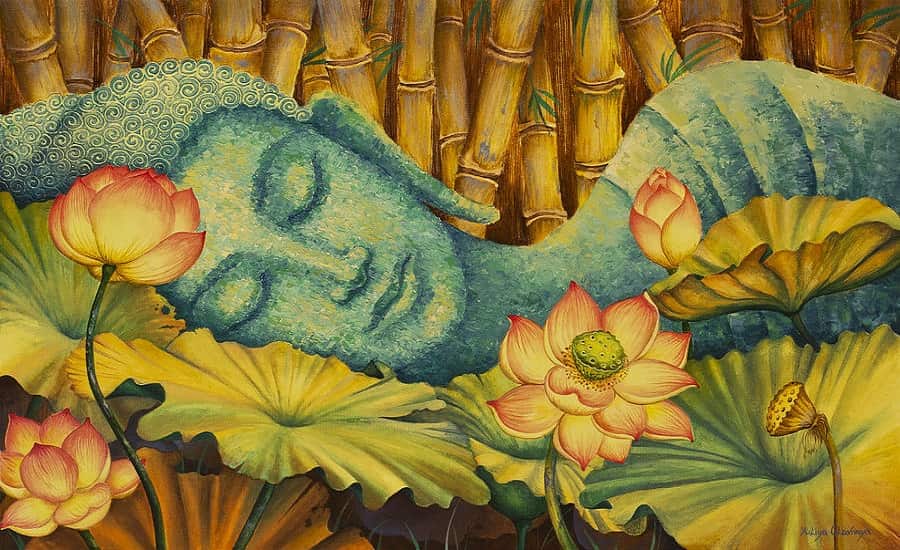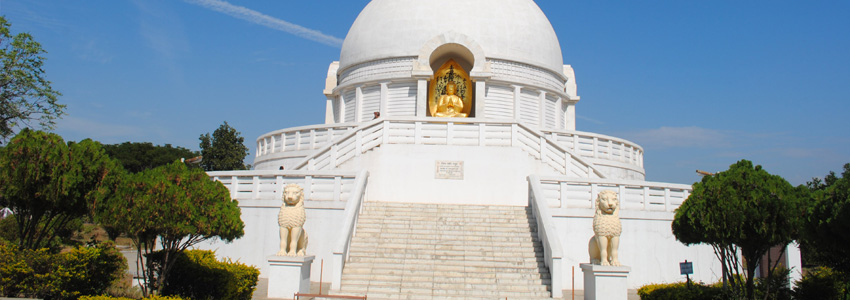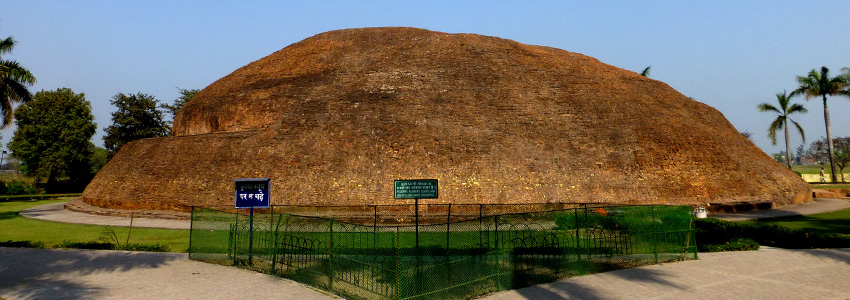Lord Buddha urged those among his followers who feel inclined to embark on pilgrimages to visit four sacred sites that mark the spiritual evolutionary leap his soul made at each of them. These include Lumbini( his holy birthplace situated in present day Nepal), Bodh Gaya (the sacred site at which he attained enlightenment), Sarnath (where he delivered his first sermon and took on the role of a spiritual Teacher) and Kushinagar (the land where he chose to leave his mortal body and attain parinirvana). Kushinagar used to be the capital of the Malla kings, who were ardent followers of Buddha’s Teachings. Kushinagar is situated in present-day Uttar Pradesh.
Due to the universality of Lord Buddha’s spiritual teachings, pilgrimage to Kushinagar is carried out not only by Buddhists but by people from diverse spiritual and religious orientations who had benefited from the profundity of his teachings.
Story of Buddha’s Last Days

Lord Buddha predicted on the eve of Magh Purnima that he would attain Mahaparinirvana at Kushinagar three months later. The 80 year old spiritual Teacher was at Vaishali in present day Bihar when the rather disheartening announcement was made.
Parinirvana is translated as final enlightenment. Although Buddha had attained enlightenment at Bodhi Gaya 45 years earlier, it was with parinirvana when he let go of his mortal body that he freed his soul from all remnants of an earthly life. The moving story of his final days is beautifully depicted in Maha Parinibbana Sutta. Ananda, foremost and beloved among Buddha’s disciples, emerges as a central figure alongside the spiritual giant of his Teacher Buddha.
Upon the foreknowledge of the impending physical demise of his beloved Teacher, Ananda’s heart was in turmoil. Buddha compassionately reiterates the teachings he had always stood by- of the nature of impermanence of things, of the need for self-reliance in spiritual practice, of the need to seek refuge in Buddha’s Teachings of Dhamma (‘dharma’ in Sanskrit). On his final journey till Kushinagar, he kept reiterating to all his followers and disciples the need to seek spiritual liberation by one’s own efforts and to earnestly put into practice the teachings he had gifted them.
Maha Parinibbana Sutta then moves on to depict his encounter with a metalworker Cunda whose food Lord Buddha graciously accepted. The exact cause of his death is controversial as the sutta says that Buddha admonished others from consuming the rest of the food and asked for it to be discarded. He supposedly fell violently ill, but relieved Cunda from any ethical/karmic responsibility for his sickness and subsequent death.
As Buddha reached a beautiful grove of sal trees in present-day Kushinagar (known as ‘Kushinara’ in those days), Ananda prepared a couch between two chosen sal trees as the final resting place of his beloved Guru. Lord Buddha laid down his physical body, with his head pointed towards the north and supported by right hand. The poetic descriptions of the Sutta convey that the Sal tree bloomed out of season, to let its blessed flowers rain upon the sacred body of Lord Buddha. Heavenly flowers were said to have scattered upon the holy man’s body as well, accompanied by the musical cadence of celestial music. Buddha’s skin outshone the radiance of the bright, golden robes he was clothed in.
Ananda couldn’t help but burst into tears. He was reminded again of the inevitability of death and decay that looms above all corporeal things. All things that begin ought to end as well. He later encouraged Ananda to persist on his spiritual path, as his loving service to Buddha had earned him much spiritual merit and he was close to being an arihant (enlightened being)himself.
The people of the whole town gathered to bid farewell to the compassionate spiritual Teacher who had spent all years post his enlightenment in showing the path of Truth, of Dhamma to one and all. The sutta says how the skies too were crowded with thousands of divine beings who wanted to see the master in his final moments of human glory. He spoke to everyone of how the real Teacher- the dhamma and the discipline he had shown throughout his life- would continue to serve as their master after his passing away.
After teaching the path of dhamma to a final seeker Subhadda, Buddha asked the assembly if they had any lingering doubts regarding the path of Dhamma thrice and after receiving their silence as answer, he exhorted them to strive diligently for their own enlightenment and emphasized the impermanence of everything material. As the master descended into the realms of a deeper meditation and took his final breaths, many among the assembled broke into sobs. The Bhikkhus who had crossed over to the stretch of liberation sat quietly contemplating the impermanence of all things.
Kushinagar still carries in its essence the spiritual aroma of this great celestial event, wherein one of the most glorious spiritual beings to have walked upon earth attained parinirvana.
History of Kushinagar

Upon the 2500th anniversary of Buddha’s parinirvana, Indian Government built the present sacred shrine of Parinirvana stupa at Kushinagar in honour of his sacred memory. The first stupas to have been raised over the sacred soil were constructed by King Ashoka in 260 BCE. Emperors of Kushan and Gupta dynasties expanded and developed Parinirvana stupa further. The city of Kushinara, its ancient name, was lost to the memories of the world by 12th century AD. It was in 1876 that archeological excavations revealed Kushinara’s ancient roots.
It is also to be noted that many people believe the city to have been founded by Sri Ram’s son King Kush. Etymological roots of its name and its proximity to Ayodhya justify this proposition.
Chief Pilgrim and Tourist Attractions in Kushinagar

Parinirvana Temple and Parinirvana Stupa
This Buddhist Temple forms the spiritual heart of Kushinagar, the final abode of Buddha’s mortal body. In fact, this is said to have been the precise spot at which Buddha breathed his last. A 6.10 m long statue of Lord Buddha in reclining pose is its chief attraction. This fifth century monolith built of red-sand stone placed upon a huge brick pedestal is faced towards the west direction. The temple is surrounded by beautiful lawns and ancient ruins. If you visit Parinirvana temple during the evenings, you can witness monks wrapping the shoulders of reclining Buddha with saffron hued silk sheets, engaging in the symbolic act of putting Buddha to rest for the night.
The ancient Parinirvana stupa, standing at a height of 19 m, is located within the premises of Parinirvana Temple. The adjoining park also has a huge dharma bell built by the Buddhist spiritual Leader Dalai Lama
Matha Kuar Shrine
This shrine marks the site at which Buddha delivered his final sermon. A 3m tall statue of tenth century AD is located in this site. It depicts Buddha in a ‘Bhumi Sparsh Mudra’ pose seated beneath the shade of a Bodhi Tree.
Ramabhar Stupa

It is said that Buddha’s mortal body was kept for darshan seven days following his death, after which Malla kings cremated his remains at this site. The relics associated with Lord Buddha were divided amongst the many claimants who raised stupas to house the sacred remnants in different parts of the world.
This half ruined Stupa stands at 15 m height. The surreal aura about this dome-shaped stupa is the first thing you notice when you see it. You will inevitably spot many monks soaking in the spiritual air of the place and meditating in its premises and its many palm-line paths.
Other chief attractions in Kushinagar include Wat Thai temple constructed in Thai-Buddhist architectural style, Indo -Japa-Sri Lanka Temple built in modern architectural fashion, the beautiful Burmese Temple, its serene Meditation Park and the many ruins of ancient monasteries strewn across the terrains of Kushinagar.
How to Reach Kushinagar
The nearest railway station and airport are located in Gorakhpur. Kushinagar is a mere 44 km drive from the city of Gorakhpur.
Once you are at Kushinagar, it’s as if time slows down and you are suddenly immersed in the subtle but ever present mystical and spiritual realms, inner and outer, that you might have missed whilst caught in the cacophonies of daily life. Engage in deep conversations with many monks you spot here, descend deeper into the joys that meditation opens up and contemplate on the essence of spiritual teachings left by the Great Buddha. And let his final words urging his true followers to practice the path of Dhamma earnestly guide you as well.


